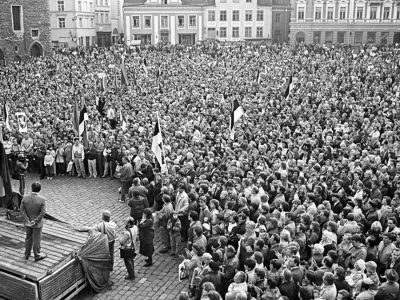Warning: Trying to access array offset on value of type null in /home/amynelso/public_html/soviethistorys17/wp-content/themes/magazine-premium/template-parts/content.php on line 13
When one thinks of Stalin one of the first things that comes to mind is crushing oppression. Images of gulags and mass executions of political rivals, dissidents, and anyone deemed an ‘enemy of the people’, are forever intertwined with his name. The largest and most widespread of these purges known as the Great Terror occurred throughout the 1930’s, with the largest actions being taken between 1936 and 1938. During this time Stalin and the head of the People’s Commissariat for Internal Affairs (NKVD) Ezhov signed the death warrants of hundreds of thousands of people and sent nearly a million to forced labor camps. The targets of this purge were scattered and many were completely innocent. Many prominent party officials like Nikolai Bukharin, Karl Radek, and Yuri Piatakov along with much of the general staff of the Red Army and other prominent Soviets were put through show trials to make an example of what happens to traitors. One prominent party official, Nikolai Krestinskii, evidently forgot that he was part of a Trotskyite conspiracy when he begged for his life in front of the court. The next day, after another night in prison and some persuasion, he reversed this position and accepted guilt. Many of the victims of these purges weren’t even given the luxury of a trial or were given a quick and painful trial without testimony and disappeared to Siberia or a hole in the ground.
While doing research on this topic, I found it very interesting that many of the people of the Soviet Union still had faith in their government during this time. Author Ilia Ehrenberg states that people thought Stalin must have been ignorant of the mass executions and purges and found it hard to believe that he would allow this to happen under his watch (Freeze 368). In a letter to the Central Committee of the Communist Party following the removal of Ezhov as head of the NKVD, V. Chernousov felt optimistic that things would change, citing Ezhov as the source of all of the terror and indiscriminate slaughter. Another example of citizens faith in their government comes in Autobiography of an Exile by L. S. Tsel’merovskii. In it, the author included a letter he wrote to the Supreme Soviet after his citizenship was revoked. He lost it simply because his father, likely innocent as he says, was sent to a gulag for being a ‘malcontent’. In the letter he expresses his earnest desire to serve the Soviet Union, the nation that has taken so much from him, in the Army. This mentality of trust in the state, even when it is killing its people at an alarming rate, is extremely interesting to me. They continued to turn each other in for imagined crimes or petty disagreements, even innocent neighbors, while believing the state would never get to them.
Link to Seth’s original post here
Bibliography
Freeze, Gregory L. Russia: a history. Oxford: Oxford University Press, 1997.
Siegelbaum, Lewis. “The Great Terror.” Seventeen Moments in Soviet History. Accessed March 12, 2017. http://soviethistory.msu.edu/1936-2/the-great-terror/
L. S. Tsel’merovskii, Letter to Presidium of Supreme Soviet, September 13, 1938. Available: http://soviethistory.msu.edu/1936-2/the-great-terror/the-great-terror-texts/autobiography-of-an-exile/
V. Chernousov, Letter on the Removal of Ezhov, December 10, 1938 Available: http://soviethistory.msu.edu/1936-2/the-great-terror/the-great-terror-texts/letter-on-the-removal-of-ezhov/
Bukharin, Nikolai. Excerpts from Bukharin and His Trial. 1938. Available: http://soviethistory.msu.edu/1936-2/the-great-terror/the-great-terror-texts/bukharin-and-his-trial/
